ZF LOGISTICS, TRANSPORTS AND AUTOMOTIVES 2025.

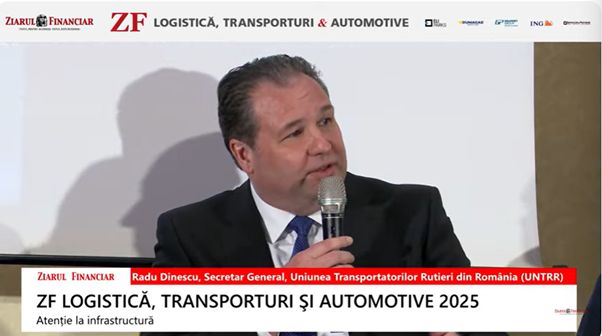
Author: Roxana Rosu
15.04.2025, 11:18 247
Infrastructure is important if it can be used properly. Just think of the queues at the border with Hungary. Schengen accession has reduced carriers’ losses by 2.5 billion euros annually, said Radu Dinescu, secretary general of the Union of Road Hauliers of Romania (UNTRR) at the ZF LOGISTICS, TRANSPORTS AND AUTOMOTIVES 2025 conference.
Highways spread prosperity. Infrastructure is important if we can put it to good use. Let’s not forget the queues at the Hungarian border. Schengen accession has reduced our losses by EUR 2.5 billion annually. We have a rate cap in 2025, but we have customers who also ask us to lower it. Given the unpredictability of costs, I think joining Schengen will attract foreign direct investment.
We know that there are big car companies that did not come here because we were not in Schengen. But we also need to act faster, issue permits and approvals faster.
What else did Radu Dinescu say:
►Between Romania and Ukraine, there is no land connection on the south side. A bridge could be built quickly, but it is only 2 km long, from Galaţi, through Moldova and then Ukraine. There is only a connection from the north and that is a challenge.
►In 2023 we had 2.4 billion euros in losses due to border delays, in 2024 it was 2.5 billion euros, and most of that came from waiting times. If a truck has to wait 1, 2 or 3 days to cross the border, it creates er costs.
►Schengen is a relief now that the situation is stagnant. Last year we had 48,000 drivers and a fleet of about 177,000 trucks. The contribution to service exports comes mainly from the relationship with the EU, where 67,000 trucks operate.
► The road transport sector far outperforms the Romanian economy as a whole. We are in 3rd place after Poland which has about 40%. And after Lithuania which is about 20%. But in the last 3-4 years we are going backwards. And there are some explanations. Poland has 160,000 drivers from outside the EU. Lithuania has 106,000 drivers from outside the EU. Romania ë has 1,500 of them. The Romanian authorities have decided to allow the first inspection of non-EU drivers from April this year. This could give us a chance to have enough staff as we are currently facing a driver crisis.
► As of Jan. 1, 2023, Poland has more than 1 million non-resident foreigners. That is, legally working people from outside the EU. And every year we have a quota of 100,000. If we claim that Romania is half of Poland, in terms of population size and economy, then I think we should work on certain themes that will allow us to provide services to Europeans, and not only to Europeans.
► Another issue is the connection to China. There are trucks going all the way to Kazakhstan and Kyrgyzstan and it would be a shame not to connect to this flow. Countries in Kazakhstan, Kyrgyzstan and Uzbekistan have good connections to Lithuania and Poland. And many apples come from logistics hubs, from the border with China to Europe, especially for the automotive sector.
► We expect cost increases in 2025. The government has discontinued the partial excise tax refund program. One-third of transportation costs are fuel. Partial reimbursement is always important, both when the price of diesel goes up and when it goes down. If it does, we have a demand problem in the market.
►Often we sabotage ourselves. For example, a decision has now been made at the European level that if you don’t have a second-generation smart tachograph, but you also don’t go to another EU member state, but you only transit the car to a country outside the EU, then you no longer need a second-generation smart tachograph. The first fine was given by Romania to a Romanian, who came from Turkey and was on his way to Ukraine. We asked for a two-year delay, but Romania issued the first fine, to a Romanian driver. We do not have control systems like in Hungary, with designated parking spaces, nor a system to keep track of the collection of fines.
► We have a shortage of 35,000-40,000 drivers. There are 355,000 certificates for freight drivers and 77,000 for passenger drivers. There are 365,000 tachograph cards issued. However, there are only 268,000 drivers working in Romania.
► In March, the EC announced the rescue of the auto industry, but at the same time the obligation for transportation companies to purchase electric vehicles. Fortunately, he did not say how much. An electric truck costs 360,000 euros new. An old electric truck costs 120,000 euros. A normal truck, 5 years old, used internationally, is not worth 20,000 euros anymore.
► I think we need to look closely at what is happening at the European level and diversify our relations with the Middle East and even with China.
► Today, more than 20 documents are required in a driver’s cab. By 2030, we want to have a paperless cab, completely digital.
► We spoke with Bucharest City Hall about allowing of electric cars in the city. There is a tendency not to let big trucks into the city, but there is a problem: the city is getting more crowded with the use of smaller cars. The government needs to be closer to the industry, we need to increase the effici ëntion increase.
► We also discussed with City Hall that when modernizing a boulevard that includes commercialële spaces are, provisioning must be taken into account. Usually stores do not have loading docks.
► No standardization of access to the city. No digitization of the authorization process
► 600 liters of diesel fuel is equivalent to 12 tons of batteries. A long-haul truck has 1200 liters of diesel fuel, equivalent to 24 tons of batteries and thus the capacity of the truck.
ZF Logistics, Transport & Automotive Conference 2025. Infrastructure creates prosperity wherever it is built, and A0 will be a “game changer” for Bucharest. Schengen is a “breath of fresh air” and logistics companies are waiting to cross the 8 million-square-meter warehouse threshold.
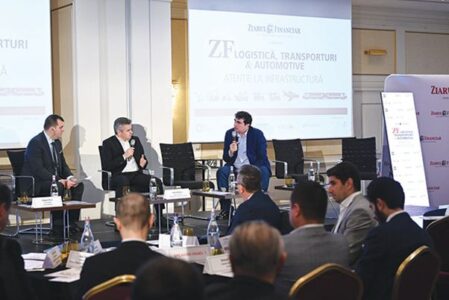
♦ Interest in nearshoring remains strong as the local market is open to new investments in production. The automotive industry has already started producing the first electric cars in Craiova, produced by Ford Otosan. Production is expected to increase again in the coming months.
Joining the Schengen area has increased the productivity of Romanian companies and increased the efficiency of carriers. Moreover, we can continue to attract manufacturing investments more easily and logistics service providers are developing regional hubs in Romania.
“Infrastructure is important if we can use it well. Let’s not forget the queues at the border with Hungary. Schengen accession has reduced our losses by 2.5 billion euros annually. I think joining Schengen will lead to foreign direct investment. We know that there are big car companies that did not come here because we were not in Schengen. But we also need to act faster, to issue permits and approvals faster. In 2023 we suffered EUR 2.4 billion in losses due to delays at the border, in 2024 it was EUR 2.5 billion, and most of that came from waiting times.
If a truck waits 1-2-3 days to cross the border, the costs add up. Schengen is a relief now that the situation has reached a plateau. Last year we had 48,000 carriers, now 47,000. Fleets are about the same, about 177,000 trucks. Contribution to exports “The service sector is largely driven by the relationship with the EU, where 67,000 trucks work there dedicatedly,” said Radu Dinescu, secretary general of the Union of Road Transporters of Romania (UNTRR) at the ZF Logistics, Transport & Automotive 2025 conference, organized by ZF together with ELI Parks, ING Bank, Grampet Group and Simon, Iuga & Partners.
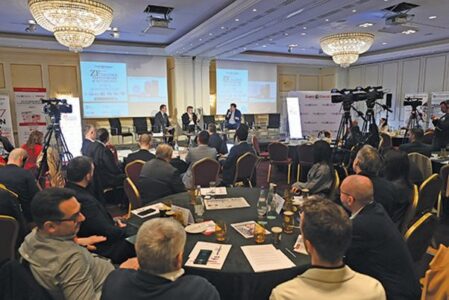
The road transport sector far outperforms the Romanian economy as a whole.
“We are in third place, after Poland, which has about 40%. After Lithuania, which has about 20%, a country of 2-3 million people. We have been declining for the last 3-4 years, which means we were also above 10%, and we are declining in these segments. And there are some explanations for that. Poland has 160,000 drivers from outside the EU. Lithuania has 106,000 drivers from outside the EU. Romania ë has 1,500.
Romanian authorities have decided to allow the first control of drivers from outside the EU from April this year, which could give us a chance to recruit staff as well, as we have a driver crisis,” Radu Dinescu stressed.
Local infrastructure continues to develop. For example, the A0, the capital’s new ring road, will allow traffic on the entire southern section, between the A1 and A2, by 2025, and new sections of the A7 are nearing completion.
We tendered for highways, we awarded two large contracts for the A8, the Tg-Mureş-Tg-Neamţ area. We have three other projects under evaluation. Moldova has been left out for a long time, but now it is here. It was normal that after Sibiu-Piteşti, the second connection across the mountains would go to Moldova. Many residents there work abroad. A highway increases the GDP of the region, this can also be seen in other areas, on the A2. And I think it will be the same in Moldova. We need such highways in Moldova to make the best use of the workforce we have there, especially because they can be brought to the country, which is already specialized in different fields. And I think it’s good that this is happening. Bucharest’s third ring is not in the strategy yet. It still has to be included in the strategy, we have to think ahead. Let’s at least do a feasibility study. Bucharest-Giurgiu will be able to function partially as a “Third Ring. I personally proposed this Third Ring as early as 2021, but at some point it should be included in the strategy,” said Gabriel Budescu, general director of the National Road Investment Company (CNIR).

Logistics activity, especially the trade in storage spaces, is again showing a positive trend, respectively increasing demand from the point of view of logistics service providers. The total stock of logistics spaces amounts to 7.5 to 7.6 million m² and market participants expect the local stock to rise to more than 8 million in the near future. Square
“Five years ago, during the ZF event, we started with 1.8 million square feet. And right after that, I was inundated with questions and discussions. It seemed impossible how you could reach that many million square meters, given the precarious infrastructure, the non-functioning economy, the immature fiscal policy and the stagnation of developments. By the end of the year, we will definitely reach 8 million square meters,” said Laurenţiu Duică, managing partner and co-founder of Winstone Real Estate Services.
Now the plan is to increase this number to 15 million. sq. ft. of modern logistics spaces.
“We talked about how we will reach the 15 million square feet, what we will achieve in the next five years. We will undoubtedly be driven by infrastructure like never before.
If something happens in this country in terms of large-scale infrastructure, it is positive and congratulations to those who push things there and don’t leave them like PNRR or other programs we lose money on. Infrastructure will continue to develop these areas because there is production, because there are already aviation products, because there is car production, because there are car parts and I believe Romania can quietly attract production in these areas,” Laurenţiu Duică explained.
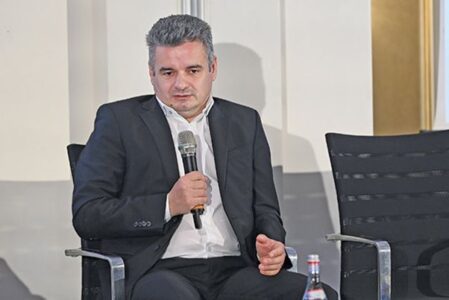
Gabriel Budescu, managing director, National Road Investment Company
► Moldova was overlooked for a long time, but now the time has come. It made sense that after Sibiu-Piteşti, the second connection would go over the mountains into Moldova. A highway increases the GDP of the region, as we have seen in other places on the A2. And I believe this will happen in Moldova as well.
► The highway to Giurgiu is in the feasibility study phase and I hope we will have a winner this month. And then, as part of the feasibility study, we will choose the route.
► Bucharest Ring Road 3 is not yet included in the strategy.
I think it’s necessary and we need to start thinking about the future. There is a tremendous amount of construction in the north of the capital and it will be difficult if we cannot designate an access road now.
► In Bucharest – Giurgiu, we asked the designers to analyze whether it is more competitive to build with concrete, since we have concrete plants in the country and we import more than 90% of bitumen.
► We want to improve the supply chain at the next auctions to promote local production.
► On the Piteşti-Sibiu highway, lots 2 and 3 have been assigned. On July 3, part of the technical project was approved. I think work will begin this year. But 2028 as a completion date is a somewhat optimistic deadline.

Adrian Sandu , secretary general of the Romanian Association of Automobile Manufacturers (ACAROM)
► In the first quarter, we are still in a decline in terms of vehicle production. We have the possibility of rebalancing by mid-year, and by the end of the year we may even be in the red.
► We see different changes in the positions on customs duties, exceptions to exceptions. I believe a free trade agreement between the EU and the US or a compensation agreement will be reached. Car manufacturers want the EU to negotiate and reach an agreement.
► In terms of component production, we see a slight recovery in the market for new vehicles in Western Europe and have good starting positions.
► We need to develop infrastructure for rail transport. Rail freight speed in Romania is somewhere around 17-18 km/h
► We need investment to rebuild bridges. By ReArm Europe, we don’t just mean the automotive industry; there will also be a military industry. We will need logistics spaces for military purposes, not just for civilian use. And we will need bridges that can carry huge amounts of cargo.
► Infrastructure is a competitive criterion and essential if we want to attract new investment to our country.
► There is no industrial sector in the world that produces a finished product made 100% of components from one country, not even China.
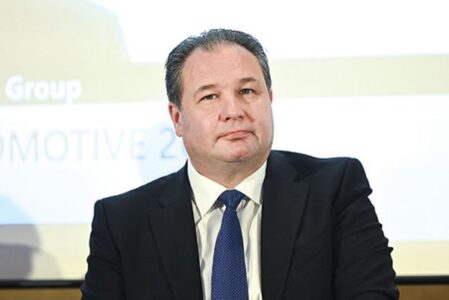
Radu Dinescu , secretary general of the Romanian Union of Road Hauliers (UNTRR)
► Infrastructure is important if we can put it to good use. Joining Schengen reduced airlines’ losses by EUR 2.5 billion a year. I think it will also lead to foreign direct investment. There are big car companies that did not come to Romania because the country is not in the Schengen area.
► Schengen is a breath of fresh air. We have 47,000 operators and 177,000 trucks. 67,000 trucks are for the relationship with the EU.
► Poland has 160,000 drivers from outside the EU. Lithuania has 106,000 drivers from outside the EU. Romania has 1,500. I think we need to work on certain themes that allow us to provide services to Europeans, not just Europeans.
► We have a shortage of 35,000-40,000 drivers. There are 355,000 certificates for freight carriers and 77,000 for passenger transport. There are 365,000 tachograph cards issued. Only 268,000 people work in Romania.
► The EC announced the rescue of the auto industry, but at the same time the obligation for transport companies to purchase electric vehicles. A new electric truck costs 360,000 euros. An old electric truck costs 120,000 euros.
A normal 5-year-old truck used internationally is no longer worth 20,000 euros.
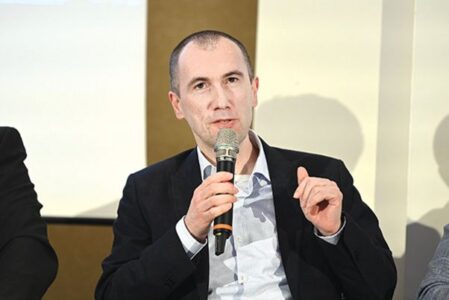
Adrian Humă , head of automotive, transport and logistics, ING
► Even if Romania has somewhat missed the train on electric vehicles, there are still two very important trains for us: autonomous vehicles and hydrogen electric motors. There are very big projects coming here in the near future and it is good to position ourselves.
► Interest rates showed a downward trend, but surrounding events have slowed this trend, as there are very high inflationary pressures. But it is money for projects that are for the future.
► Banks finance the production of cars or even rolling stock.
► The autonomous vehicle industry has an annual growth rate of about 30%. It’s huge. If the regulatory aspect is also solved, we have great opportunities there. There is already industry in this area, the companies are not very well known, but they are producing.
► It would be a good time for us as a country to have a battery project.
► Given current developments, the automotive sector, like real estate, falls under the “under observation” category of banks. That does not mean we do not finance, but we are looking more carefully at future projects.
► US tariffs are a far greater threat to the US than to the EU.
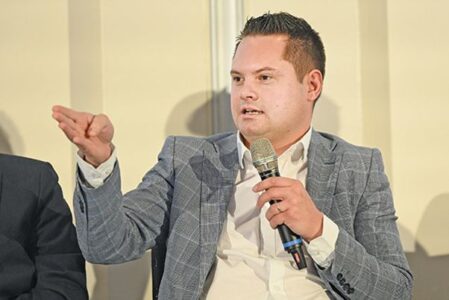
Kristof Schils , commercial director, ELI Parks
► We need to diversify transportation, not only by road or rail, but also in terms of intermodal terminals and logistics. It’s an ecosystem. For years we only had 50 km of highways, now we have 200 km. But maybe we need highways, not just freeways. Maybe it’s more economical.
► We see interest in investment. We see more regional development, not only in Bucharest. We see investment in the Moldovan corridor, in Iași and Bacău, and in Oradea, after entering Schengen. There is growth in the consumer, retail and FMCG sectors, as well as manufacturing companies.
► We have 200,000 sqm in portfolio and 30-40,000 sqm under development, in Bucharest and Ploieşti. The rent amounts to 4.5-5 euros/square meter. We want to reach the 500,000 m ² reach.
► Warehouses used to be built for national distribution, now we see regional distribution. I hope in the future we will see European distribution centers here as well.
► The project in Bucharest is in Buftea, between A3 and A1. I think there will be a new logistics hub there in the future. When choosing the location, we pay very close attention to infrastructure and utilities. We also install solar panels.

Matei Ladea , co-founder of Omnia Capital
► Last year we opened the subsidiary Dumagas GmbH in Germany. Since its founding, we have achieved sales of 20 million euros in eight months.
► Bureaucracy is 5-10 times worse in Germany than in Romania.
► In Germany, workers are hunted from all sides. No matter how much you pay, there is always someone paying more. There are areas with excessive logistics density, where everyone works. That’s why it says everywhere they hire drivers and “offer us the salary you want to work for.”
► We were able to hire 150 drivers in Germany. 95% are from Romania, the rest are Romanian drivers who were already living in Germany.
► We have direct contracts with Mercedes, with the Schwarz Group in Romania, with the Schwarz Group in Germany, with Jaguar Land Rover and with Ford Craiova.
► Last year we also opened a branch in Italy, from which we want to export from Italy. We have customers in the United Kingdom, France, Spain and Germany to whom we export. We are also trying to stabilize a line between Romania and Western Europe, now that Schengen has improved our conditions.
► For Ford Craiova, we handle the logistics for automotive parts going into production. The parts are with us, we take care of their transportation, storage, collection, processing and just-in-time delivery to the production line.
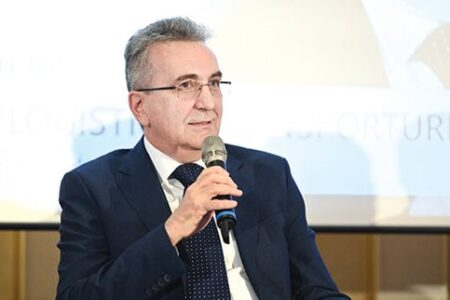
Sorin Chinde , vice president, GRAMPET Group
► Infrastructure in general brings development. Be it road infrastructure, highways or rail infrastructure. Rail infrastructure in Romania indeed leaves much to be desired. It follows 30 years of terrible underfunding.
► Modernization of the 829-kilometer corridor from Curtici to Constanţa began in 2001. After 25 years, not even half of it has been modernized.
► With the exception of two sleeper factories, we import all necessary materials. Railroads, automation and signaling, technical solutions.
► Hungary has invested a lot in the railroad sector, the country has a very good infrastructure for freight transport. A train trip through Hungary takes 12 hours and in Romania it takes 2 days.
► After the highway program is completed, probably sometime between 2030 and 2032, I expect to see massive investment in the railroad area.
► The Green Deal states that by 2030, 30% of road transport should be transferred to rail. This switch represents a 200% increase in the volume transported by rail.
► Grampet’s investment budget for 2025 is 50 million and is focused on tank cars and locomotive modernization. We are modernizing a terminal in cooperation with a local government.
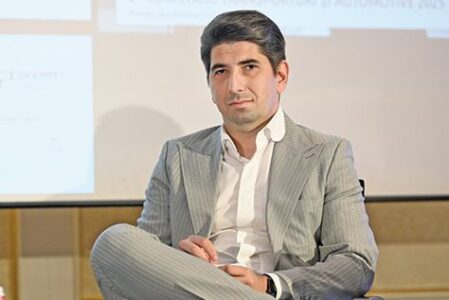
Andrei Koszti, partner, Simon, Iuga & Partners
► In 2016, Romania had 747 km of highway and 1.5 million square meters of industrial space. By 2025, there will be 1,269 km of highway and an additional 475 km. The stock of modern industrial spaces will be 8 million square meters. This means that 1,000 km of highway will have created 6 million square meters of additional industrial space.
► This year we are reaching 8 million square meters of modern spaces. To understand the size, we are talking about a place the size of the city of Sinaia.
► Romania is positioning itself as a distribution center. There are already companies that have established themselves here, distributing in the Balkans and around Asia. I mean Istanbul, but that is not necessary.
► We are becoming more and more attractive for production areas. If until now it has not been possible to deliver production exactly on time and in the right order, there are already investors and companies who want to open production centers with Schengen.
► Do we want to return to the industry of the 2000s, when we made beautiful T-shirts in Botoşani or in a Zara factory in Focşani? Or do we want to move on to displays, airplanes, data centers and the self-driving-car industry?
► As long as we learn to become more professional and look after customers’ interests with the utmost care, there is a good chance that we can beat Poland, Hungary, Bulgaria and other neighboring countries in Eastern Europe.
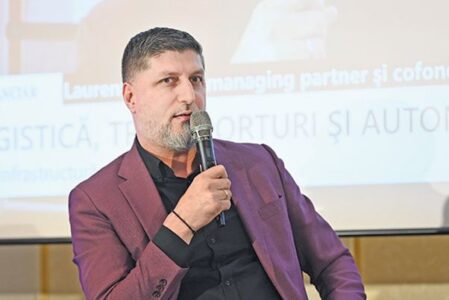
Laurentiu Duică , managing partner and co-founder, Winstone Real Estate Services
► Five years ago we had 1.8 million square meters of logistics space and we said we would reach the 8 million square meters. It seemed impossible then, but by the end of 2025 we will most likely reach that level.
► We have 76 industrial parks and Poland has about 300.
► In our country, as an investor in industrial parks, you depend on the mayor and city council. I mean, you give a developer an industrial park title for 49 years, but I went to them with a bill and proposed a introduce tax on buildings. That tax should not be 0%, but also not 1.3-1.4% as a mayor near Bucharest does. Set a clear rate so that we know and are predictable.
► We only deal in or have spaces in our portfolio that are owned by developers. In reality, we also have to take into account the warehouses that are not in our portfolio. I estimate that we have over 14 million square feet of modern Class A warehouses, as we like to call them.
► As we discuss how to create 15 million square feet of modern logistics spaces over the next five years, we will undoubtedly depend more than ever on infrastructure.
► There are also new developers in the market, with a great willingness to both develop speculatively and buy land, as they do not benefit from a land portfolio.
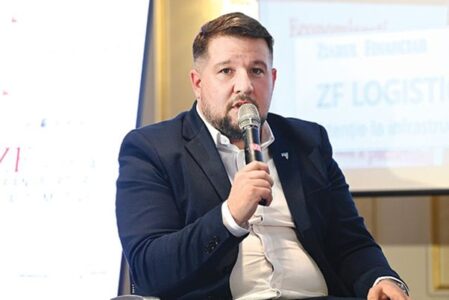
Valentin Coca , national sales director, Autonom Lease
► The auto market will stagnate slightly in 2025. There is a lot of uncertainty. People ask for bids, consult, but the decision always lingers for a while. The retail market is waiting for the Rabla program, which has been delayed from 2024. We will see if it starts in May. In the B2B sector, it’s those who need to develop who continue to do so, the others stand a little bit on the waiting list.
► There is also uncertainty in the small logistics area, where more than 50 percent of domestic transportation takes place. There are also certain market rules that cause problems. There are distributors in the fast-growing sector that cannot enter cities with 7.5-ton vehicles. There are industrial parks in cities where distributors cannot enter.
► We see that there is interest in the area of electrification. Unfortunately, the Rabla program is not intended for operating leasing companies, and this affects the penetration rate of electric cars.
► Tesla is an interesting car, but there are competitors coming from China and Europe. We want to diversify. We need electric cars and I think they are the best solution in the city. We are in talks with all the importers in Romania. When I got Tesla, it was the best calculation at that time.
► We are thinking about releasing cars that are still alive. We can market them at a competitive price. It’s part of the circular economy.
